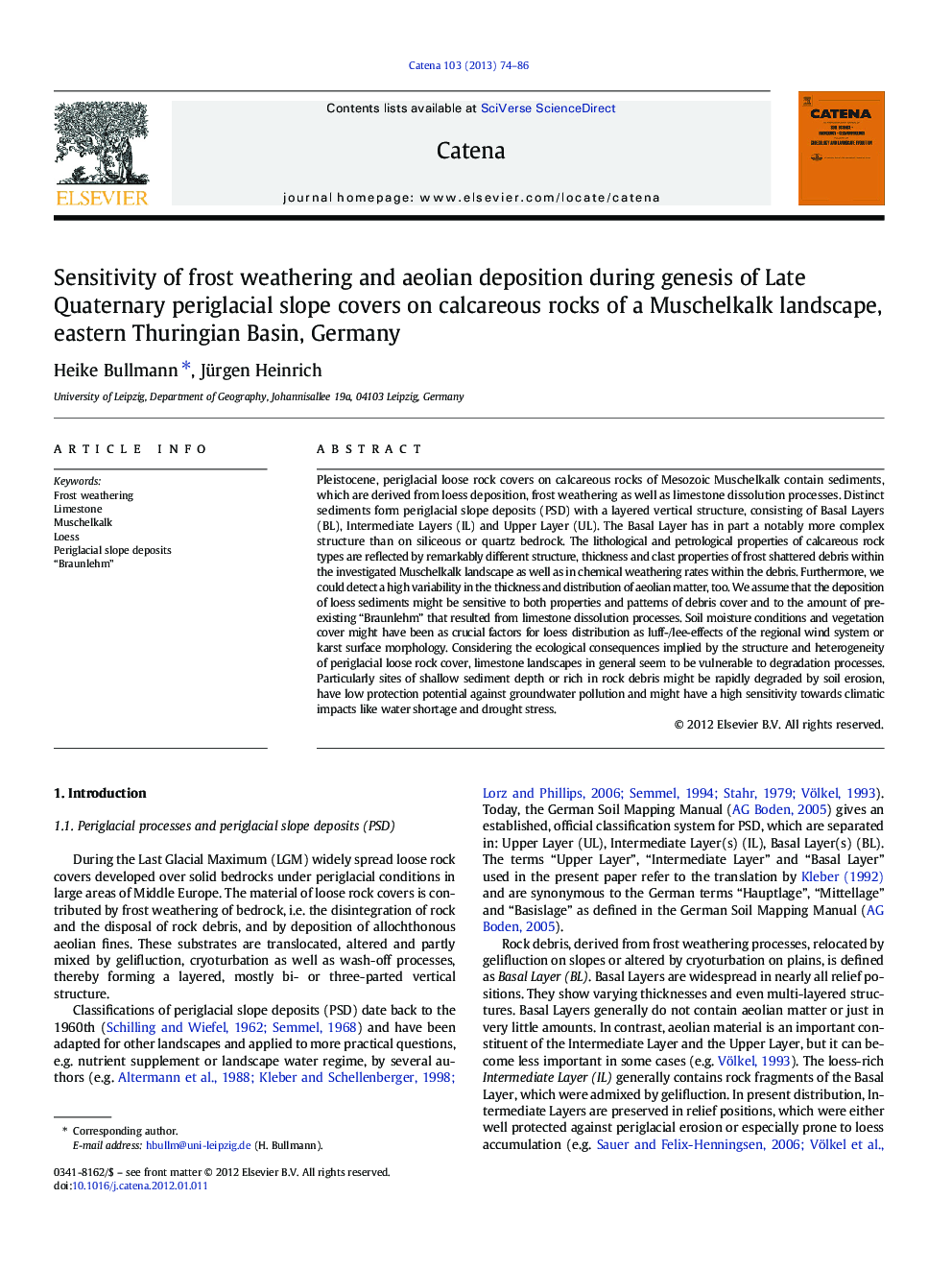| کد مقاله | کد نشریه | سال انتشار | مقاله انگلیسی | نسخه تمام متن |
|---|---|---|---|---|
| 4571741 | 1629249 | 2013 | 13 صفحه PDF | دانلود رایگان |

Pleistocene, periglacial loose rock covers on calcareous rocks of Mesozoic Muschelkalk contain sediments, which are derived from loess deposition, frost weathering as well as limestone dissolution processes. Distinct sediments form periglacial slope deposits (PSD) with a layered vertical structure, consisting of Basal Layers (BL), Intermediate Layers (IL) and Upper Layer (UL). The Basal Layer has in part a notably more complex structure than on siliceous or quartz bedrock. The lithological and petrological properties of calcareous rock types are reflected by remarkably different structure, thickness and clast properties of frost shattered debris within the investigated Muschelkalk landscape as well as in chemical weathering rates within the debris. Furthermore, we could detect a high variability in the thickness and distribution of aeolian matter, too. We assume that the deposition of loess sediments might be sensitive to both properties and patterns of debris cover and to the amount of pre-existing “Braunlehm” that resulted from limestone dissolution processes. Soil moisture conditions and vegetation cover might have been as crucial factors for loess distribution as luff-/lee-effects of the regional wind system or karst surface morphology. Considering the ecological consequences implied by the structure and heterogeneity of periglacial loose rock cover, limestone landscapes in general seem to be vulnerable to degradation processes. Particularly sites of shallow sediment depth or rich in rock debris might be rapidly degraded by soil erosion, have low protection potential against groundwater pollution and might have a high sensitivity towards climatic impacts like water shortage and drought stress.
Journal: CATENA - Volume 103, April 2013, Pages 74–86